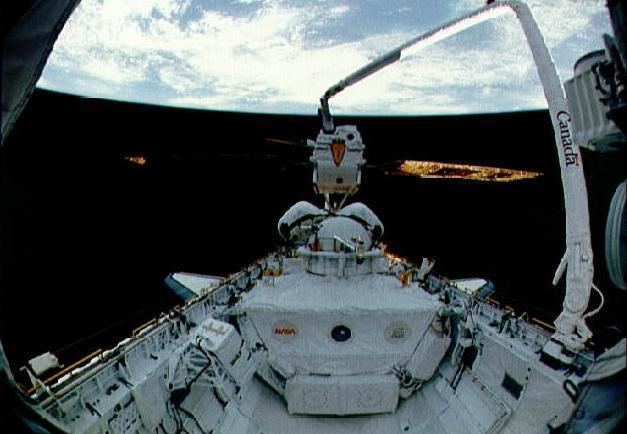 | ||
Exobiology Radiation Assembly (ERA) was an experiment that investigated the biological effects of space radiation, on board the European Retrievable Carrier (EURECA), an unmanned 4.5 tonne satellite with a payload of 15 experiments. It was an astrobiology mission developed by the European Space Agency (ESA).
Contents
It was launched 31 July 1992 by STS-46 - Space Shuttle Atlantis, and put into an orbit at an altitude of 508 km. EURECA was retrieved on 1 July 1993 by STS-57- Space Shuttle Endeavour and returned to Earth for further analysis.
Objectives
The general goal of the experiment was to study the response of dehydrated and metabolically dormant microorganisms (spores of Bacillus subtilis, cells of Deinococcus radiodurans, conidial spores of Aspergillus species) and cellular constituents (plasmid DNA, proteins, purple membranes, amino acids, urea) to the extremely dehydrating conditions of outer space, in some cases in combination with irradiation by solar UV light.
Results
The Exobiology Radiation Assembly (ERA) provided information on the exposure of invertebrates, microorganisms and organic molecules to long-term exposure to outer space conditions, such as ultraviolet (UV) radiation, cosmic radiation and vacuum.
Spores of different strains of Bacillus subtilis and the Escherichia coli plasmid pUC19 were exposed to selected conditions of space (space vacuum and/or defined wavebands and intensities of solar ultraviolet radiation). After the approximately 11 months lasting mission, their responses were studied in terms of survival, mutagenesis in the his (B. subtilis) or lac locus (pUC19), induction of DNA strand breaks, efficiency of DNA repair systems, and the role of external protective agents. The data were compared with those of a simultaneously running ground control experiment:
